By K. Gopalakrishnan
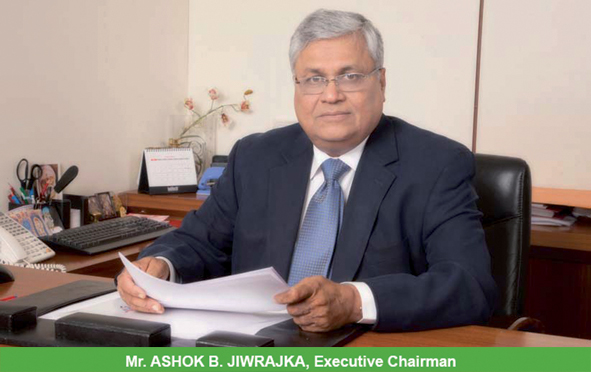 The global economies in 2011-12, witnessed slowdown. The Euro zone was the worst affected. The US economy, though impacted, has now started showing signs of mild recovery. The Chinese and Indian economies, which were driving the global economy for some time, are also showing signs of slowdown.
The global economies in 2011-12, witnessed slowdown. The Euro zone was the worst affected. The US economy, though impacted, has now started showing signs of mild recovery. The Chinese and Indian economies, which were driving the global economy for some time, are also showing signs of slowdown.
Mr. Ashok B. Jiwrajka, Executive Chairman, Alok Industries Ltd., says: “Surely, the prevailing economic environment has had an impact on the global apparel and textiles industry. Having said so, we strongly believe that economic cycles will always exist and companies like Alok, which have a long-term vision will have to rely on identifying and delivering on pockets of opportunity that are always there even in the worst of economic conditions”.
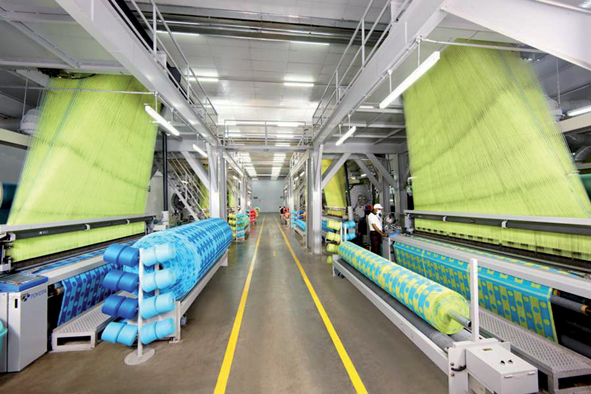 Alok’s domestic sales in 2011-12, were up 41 per cent to Rs. 5,871 crores. Exports were up 37 per cent to Rs. 3,030 crores and total sales were up 39 per cent to Rs. 8,901 crores. Operating EBIDTA increased by 40 per cent to Rs. 2,625 crores, while operating PBT moved up by 22 per cent to Rs. 762 crores.
Alok’s domestic sales in 2011-12, were up 41 per cent to Rs. 5,871 crores. Exports were up 37 per cent to Rs. 3,030 crores and total sales were up 39 per cent to Rs. 8,901 crores. Operating EBIDTA increased by 40 per cent to Rs. 2,625 crores, while operating PBT moved up by 22 per cent to Rs. 762 crores.
This ability to deliver even in difficult times is attributable to Alok’s strategic positioning as an integrated business across both the cotton and polyester value chains catering to diversified global markets.
On the supply side, Alok has integrated production facilities right from raw material processing to the finished garment manufacturing for both cotton and polyester. The market goes through various ups and downs in each segment of the value chain, and the integrated facilities help Alok focus on the specific segments that provide the company with greatest value.
On the demand side, the company continues to penetrate newer markets in terms of geography and products. Today, exports account for close to 34 per cent of the company’s stand-alone sales, and it has established strong relationships with leading global brands.
Exports are well diversified with 36 per cent for the US, 29 per cent in Asia, 18 per cent in South America and 14 per cent in Europe. The diversification helps de-risk against local market downturns. Also, the customer base is well distributed between traders, converters and final product users.
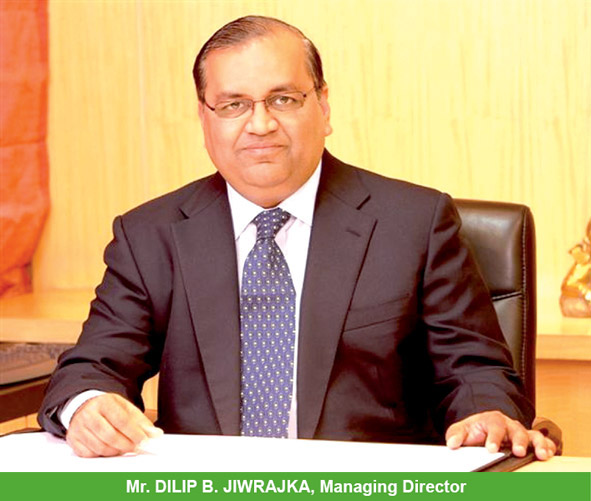 Similarly, the presence in cotton and polyester, which are often treated as substitutes in the market, gives the company the scope to best leverage market conditions. In fact, today, polyester’s share in the company’s total sales has grown to 34 per cent and the focus on value-added polyester products like Cationic yarn is paying dividend.
Similarly, the presence in cotton and polyester, which are often treated as substitutes in the market, gives the company the scope to best leverage market conditions. In fact, today, polyester’s share in the company’s total sales has grown to 34 per cent and the focus on value-added polyester products like Cationic yarn is paying dividend.
The major capex programme for developing this large integrated production capacity was completed by March 2012. Going forward, in the next few years the focus is on value-added and balancing capex-related capital investments. The new capital investment would, however, be limited to the extent of the annual depreciation so as to generate free cash flow.
Clearly, the company is moving from a phase of large investments to create global scale capacities to a phase of consolidation when efforts will focus on getting optimum returns from these capacities. There are three fundamental goals in this phase – maximising ROCE (return on capital employed), monetising and exiting non-core businesses, generating free cash flow and deleveraging the company.
Maximising ROCE
Alok is implementing a change management programme across its facilities that is specifically targeting for efficiencies in terms of optimising cost of operations to maximise ROCE. This programme is progressing well, and one expects to see substantial positive results soon.
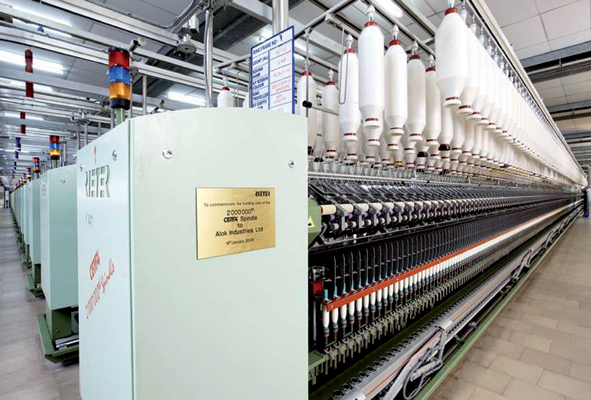 In addition, the company is pursuing a specific strategy to improve asset turnover of the integrated cotton business by increasing the volume of value-added products like yarn dyed (structured) fabrics, technical textiles and institutional workwear. The stress is also on growing the share of the polyester business where asset turnover and ROCE is significantly higher.
In addition, the company is pursuing a specific strategy to improve asset turnover of the integrated cotton business by increasing the volume of value-added products like yarn dyed (structured) fabrics, technical textiles and institutional workwear. The stress is also on growing the share of the polyester business where asset turnover and ROCE is significantly higher.
Exiting and monetising non-core businesses
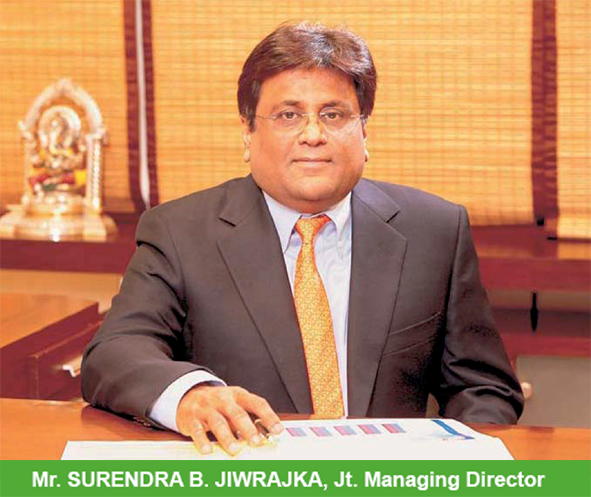 The company has in principle decided to exit all non-core businesses. Active steps are being taken to sell the commercial real estate that the company had invested in. For Ashford Centre and Peninsula Business Park, Alok has appointed a leading global real estate consultant and has already entered into around Rs. 500 crores worth of transactions. Cash flows from these are expected by the end of the second quarter of 2012-13. New strategies are being developed for the retail businesses in India and the UK to make them thin on capital intensity and bring some of the capital invested in these ventures back into Alok.
The company has in principle decided to exit all non-core businesses. Active steps are being taken to sell the commercial real estate that the company had invested in. For Ashford Centre and Peninsula Business Park, Alok has appointed a leading global real estate consultant and has already entered into around Rs. 500 crores worth of transactions. Cash flows from these are expected by the end of the second quarter of 2012-13. New strategies are being developed for the retail businesses in India and the UK to make them thin on capital intensity and bring some of the capital invested in these ventures back into Alok.
Generating free cash flow
With the intensive capex programme almost complete, the efforts at monetisation of non-core business assets and improvement in working capital cycle, one expects improved cash flows in Alok’s system. This improved cash flow with the decision to undertake marginal incremental investments would result in generation of free cash flow. In this way, with a clear focus on operations and ‘sweating assets’ it should be possible to substantially reduce debt burden and deleverage the company.
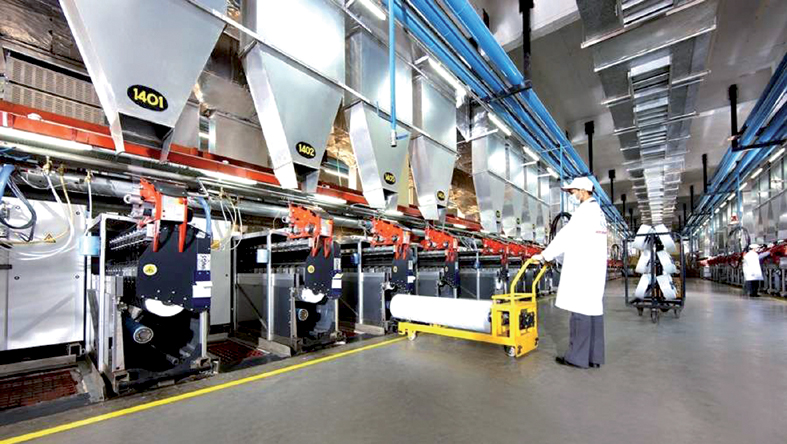 Going forward, the company expects the macro-economic conditions to be subdued in the next couple of years. Alok has the integrated capacity base in place supported by strong customer relationships. It is going to leverage both these to gain market share and continue with the growth path. The company remains cautiously optimistic on delivering results with a strong focus on improved returns on capital employed.
Going forward, the company expects the macro-economic conditions to be subdued in the next couple of years. Alok has the integrated capacity base in place supported by strong customer relationships. It is going to leverage both these to gain market share and continue with the growth path. The company remains cautiously optimistic on delivering results with a strong focus on improved returns on capital employed.
In fact, apart from competing and delivering in the domestic market, the company is ready to drive India’s export thrust in global markets. In the last 10 years global textile trade has been dominated by China. But, recently, China is witnessing an increase in labour costs, currency appreciation and environmental concerns that have affected their competitiveness. In the long run, the need to cater to a growing domestic demand with the shift to becoming an advanced economy that has less emphasis on sectors like textiles will provide an opportunity to countries like India to expand their market share. This opens up opportunities for Alok.
Mr. Dilip B. Jiwrajka, Managing Director, observes: “Our objective now is to be seen as the innovation leader for our industry. This focus cements our commitment to customers to continually improve the value proposition we offer. With optimization of new expanded capacities and the completion of the balancing capex programmes, we anticipate our sales, profits and cash flows to improve substantially from fiscal year 2013. Going forward, the objective would be to focus on innovation, expanding our position across new markets and to leverage our dominant position to accelerate growth. Alok now embarks on the most important leg of its journey thus far. This is an exciting time for the company, and we expect sustained growth and continued improvement in shareholder returns since all building blocks are in place”.
Spinning
Alok’s Spinning Division was set up in 2007, as a backward integration measure. Commencing operations with a rather modest 50,000 ring spindles and 900 rotors, Alok has consistently added capacities to become one amongst the largest spinning units in the country with 4,11,000 ring spindles and 5,960 open end rotors.
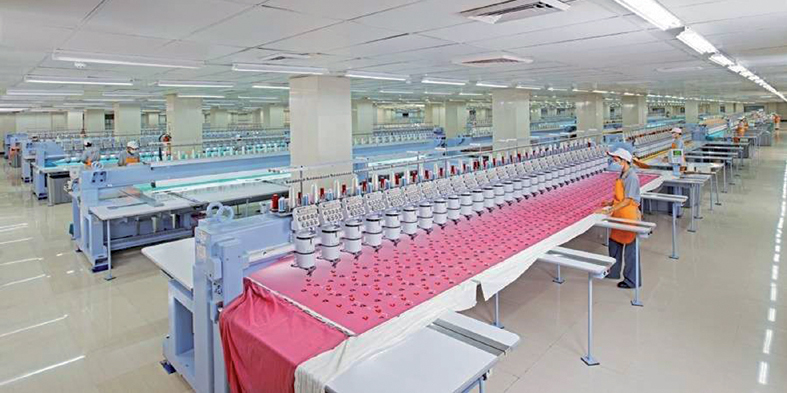 The technology adopted is highly modern and automated. The unit is capable of producing a wide range of cotton / blended yarn starting from 6 OE count to 120 count ring yarn, both compact and regular. It also has in-house gassing and doubling capacities for higher applications.
The technology adopted is highly modern and automated. The unit is capable of producing a wide range of cotton / blended yarn starting from 6 OE count to 120 count ring yarn, both compact and regular. It also has in-house gassing and doubling capacities for higher applications.
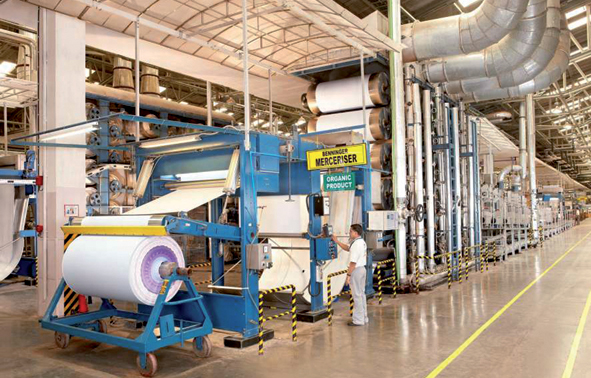 Says Mr. Sapan Mukherjee, Chief Executive Officer – Spinning, “Since our inception, we have crossed many milestones and reached good levels of productivity and quality of yarns. Almost 95% of our production is consumed in-house in our weaving and knitting units. The requirement, however, of our weaving, knitting, terry and yarn dyeing divisions is much higher than our production with our division contributing to about 60% of the total yarn requirement. In view of this, we may consider adding some more capacities in spinning in the near future to de-risk vagaries of the markets”.
Says Mr. Sapan Mukherjee, Chief Executive Officer – Spinning, “Since our inception, we have crossed many milestones and reached good levels of productivity and quality of yarns. Almost 95% of our production is consumed in-house in our weaving and knitting units. The requirement, however, of our weaving, knitting, terry and yarn dyeing divisions is much higher than our production with our division contributing to about 60% of the total yarn requirement. In view of this, we may consider adding some more capacities in spinning in the near future to de-risk vagaries of the markets”.
Alok has identified technical and specialized fabrics as its area of growth in future, and towards this end, the company is setting up a dedicated spinning unit of 11,332 spindles and 360 rotors capable of producing specialized yarn, thus becoming an integrated technical textiles producer as well.
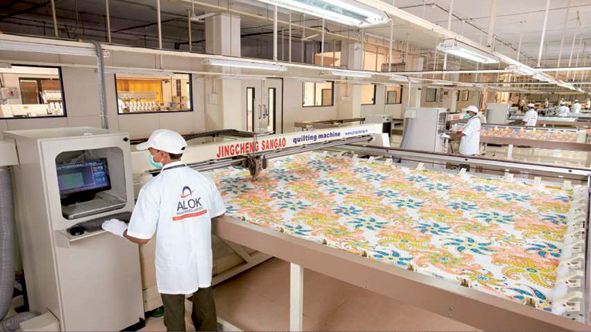 “In the years to come we will further improve aspects like productivity, quality to make this business unit even more profitable. We are ready to face challenges of a tougher, competitive and uncertain market. We will continue to put in our best efforts and retain skilled workforce through good training programs which will be vital when we add capacities and achieve greater milestones”, Mr. Mukherjee adds.
“In the years to come we will further improve aspects like productivity, quality to make this business unit even more profitable. We are ready to face challenges of a tougher, competitive and uncertain market. We will continue to put in our best efforts and retain skilled workforce through good training programs which will be vital when we add capacities and achieve greater milestones”, Mr. Mukherjee adds.
Achieving the highest level of productivity with the lowest possible input cost and maintaining the highest level of quality across products lines will be the key area that the company intends focusing on.
Weaving
Alok’s weaving unit manufactures normal width and wider width greige fabrics. The year 2011-12 in many ways was a landmark year for the weaving plant. The company has the largest number of airjet/rapier looms at one location in the country. Also, with about 800 airjet looms under one shed, the company possesses probably the largest weaving shed in the world.
In the year under review, Alok achieved a record production and hopes to break the record in 2012-13 as the company optimizes capacities and increases the running speed and efficiency of the looms. Alok produces a wide range of fabrics with different weaves such as plain weave, satin weave, twills, dobbies, jacquard, yarn dyed and technical fabrics, amongst others.
Says Mr. Tulsi Karnani, Chief Executive Officer – Weaving: “We continuously put in efforts to improve efficiency, reduce inventory and make our products more competitive. We also continuously explore efficient means to reduce our cost per pick (thereby cost per meter), shrink our total lead times and enhance customer satisfaction by producing quality products and introducing new developments”.
“For example, in the case of woven apparel fabrics, yarn dyed fabric, our value-added product segment, we reduced the overall lead time of 131 days in April-2011 to 60-65 days in February-2012 / March 2012. Similarly, we improved the production of this value-added fabric during the year. We are further increasing the production of this value-added yarn dyed fabric and expect to double it from the present level in the next few months by increasing yarn dyed capacities”, Mr. Karani adds.
Processing
Alok’s modern plants cover almost all kinds of narrow and wider width fabrics, knits, yarn dyeing and terry towel possess dye-print-finish capabilities of the highest order. Being at the end of the final value chain for finished fabrics, the company imparts maximum value addition to the fabrics. The quality of products is testified to by the fact that the company is a preferred vendor to blue chip retailers, importers and brands around the world and in the domestic market.
Alok has invested heavily in the processing segment and boasts of having the highest processing capacity in the country. Its processing facilities have the pride of place not only for the company but also for the country.
Says Mr. S.S. Aich, Chief Executive Officer – Processing: “With the most versatile and largest processing capacity, we are quite naturally and justifiably proud of our set-up and aim to turn it into the best in the world, in terms of production, cost and quality. We have targeted higher productivity with lower cost of production by intelligent use of our resources and conversion of fuel from CNG to coal within the third and fourth quarter of the current year. In addition to this, rationalization and development of right skills in employees has also been initiated to tackle shortage of skilled manpower”.
With strategic focus on value-added fabrics such as yarn dyed, technical and specialty fabrics, Alok will be expanding capacities in order to capitalize on the opportunities available to the Indian textile industry, as also to better balance out the integrated set-up of the company.
Knitting
Mr. Arvind Maurya, Chief Executive Officer – Knits, says: “Last year was a bit challenging year as our major markets, USA and Europe, witnessed slowdown. But, we believe, challenges do not come alone, they bring with them opportunities and glory. Accordingly, we were able to sight opportunity to grow our business on the domestic turf and recorded a growth of 11% in sales which increased to Rs. 268 crores in 2011-12 as compared to Rs. 241 crores in 2010-11. Looking at the growing opportunities in domestic and export markets, we are increasing our knitting capacity from the current 18,200 tons to 25,000 tons per annum in the current fiscal year.”
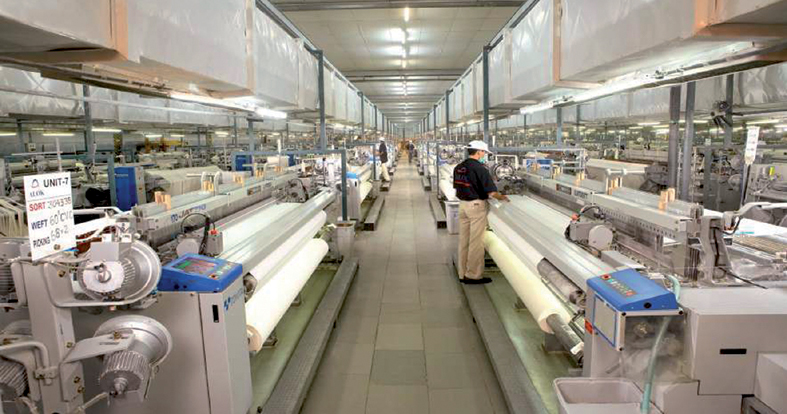 It would be the company endeavor to establish itself as the best and biggest weft knitted fabric supplier in the SAARC region by the end of fiscal 2012-13. The other important area where it would be focusing on this year is the technical wear and sportswear fabric segment. To support this technical endeavor, it is setting up a competent and world class R&D facility.
It would be the company endeavor to establish itself as the best and biggest weft knitted fabric supplier in the SAARC region by the end of fiscal 2012-13. The other important area where it would be focusing on this year is the technical wear and sportswear fabric segment. To support this technical endeavor, it is setting up a competent and world class R&D facility.
India is on the threshold of an exciting new phase of prolonged growth in textiles with the domestic market also offering sizeable opportunities. The company goal would be to make the most of this situation and position its division as a preferred / nominated vendor for global buying houses and retailers with its quality, cost and delivery (QCD) parameters.
Embroidery
Mr. Sanjay Bhatt, Chief Executive Officer – Embroidery, Alok Industries Ltd., observes: “At our embroidery plants, we produce an exquisite range of schiffli and multi head embroidered products that impart high value addition to dress materials, garments and home furnishings. Last year was challenging for us as our major market, the African Continent, was facing a downturn no different from the rest of the world. We managed to tide over it and posted sales of Rs. 161 crores, including exports worth Rs. 105 crores”.
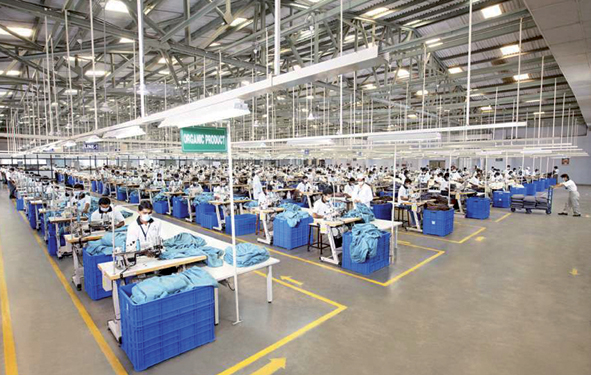 He adds: “We were co-promoted by Alok and an Austrian collaborator as an independent company called Grabal Alok Impex Ltd., but with the amalgamation of our business with Alok during 2011-12, we have become an integral part of our parent company. We see a lot of synergy in our business merging with Alok and hope to provide an incisive edge to Alok’s already formidable range of products. We can rightfully classify as having the largest embroidery capacity in the country and amongst the largest in the world too.
He adds: “We were co-promoted by Alok and an Austrian collaborator as an independent company called Grabal Alok Impex Ltd., but with the amalgamation of our business with Alok during 2011-12, we have become an integral part of our parent company. We see a lot of synergy in our business merging with Alok and hope to provide an incisive edge to Alok’s already formidable range of products. We can rightfully classify as having the largest embroidery capacity in the country and amongst the largest in the world too.
Alok believes in a simple philosophy which has helped it grow its business year on year. It believes that “our customer’s shop is our shop and our factory is the customer’s factory, and complementing each other we have grown because of our customers, and our customers look up to our support in terms of new designs and developments to grow their business”.
The company caters to various markets, domestic and overseas. The marketing strategy is rather unique in the sense that it adds two or three markets every year. Also, to maintain exclusivity of designs and as a measure of comfort to the existing clients, it avoids adding new customers in the existing markets.
As a strategic initiative for 2012-13, the company proposes to penetrate the South American market to sell its products.
Apparel fabric
Alok is a leader in the woven apparel fabric segment, and its range is wide enough to capture almost all requirements of the demanding customers. It’s also a major revenue segment for Alok, constituting about 43.41 per cent of the total revenue of the company. In 2011-12, total woven apparel fabric sales achieved a growth of 41 per cent at Rs. 3,863 crores from Rs. 2,731 crores in 2010-11. Export sales recorded higher growth of 108 per cent at Rs. 568 crores from Rs. 272 crores in 2010-11. The average price realisation increased from Rs. 103 per metre to Rs. 107.
Mr. Rohit Seru, President – Apparel Fabrics, says: “Alok is looking forward to a robust business plan in woven apparel fabrics. We shall strive to continue to hold a leadership position in this segment. Our passion is to continuously strive for high standards of quality and delivery and have a delighted the customer always. Our focus in 2012-13 would be to achieve sales growth by focusing on volume growth and improvement in the overall average rate per meter, change our product mix in line with our focus on value added products, such as yarn dyed woven fabric business, printed apparel and institutional business and increase our presence in the specialized WorkWear and technical textile business”.
The company is also planning to develop business with major WorkWear brands in the US and Europe and target international defence business in the uniform and specialty business. With its fully integrated business set-up, large-scale, modern plants and infrastructure, Alok is best equipped to derive maximum advantage of the emerging opportunities in the Indian textile industry.
Terry towel
For Alok’s Home Textile Division, already with a strong foothold in the sheeting business, investment in terry towels was just a step towards making Alok a one-stop destination for home textile buyers. Its Terry Division, started two years ago, has recently doubled its capacity to 1,100 tonnes/month, with plans to further double this in the next two years.
Mr. Sanjay Deora, Chief Executive Officer – Terry Towels, comments: “We achieved revenues of Rs. 159 crores (about $30 mn) in sales for fiscal 2011-12 and are targeting to double sales in the current year backed by the additional capacities and a strong order book. Currently our major markets are the US, the UK, Japan, Australia and New Zealand. We are exploring new markets like Russia and South America and will be constantly looking to expand our markets”.
“In the competing environment, especially from domestic companies, we are making our mark with major retailers worldwide through strong R&D. In two years we have launched new technologies like Cloud Zero, Dura and quick dry towels, giving us a leading edge with many leading retailers. Our major focus remains introducing terry towels through innovation in new fiber and process technologies. With automization at every stage of production we are confident of achieving better margins and high economies of scale as we add capacities”, he adds.
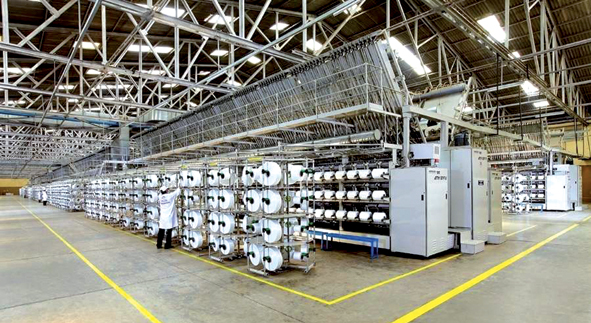 Though markets globally are a bit slow and India’s terry capacity is poised to increase further, the company boasts an overflowing order book for the next 9 months. It aims to position itself as the best in the terry industry and plans to aggressively increase its market share year on year. “We would continue our endeavor to be a one-stop source for our home textile buyers and are confident of growing our business by delighting our customers with our service and product innovation”.
Though markets globally are a bit slow and India’s terry capacity is poised to increase further, the company boasts an overflowing order book for the next 9 months. It aims to position itself as the best in the terry industry and plans to aggressively increase its market share year on year. “We would continue our endeavor to be a one-stop source for our home textile buyers and are confident of growing our business by delighting our customers with our service and product innovation”.
Garments
Mr. Romi Agarwal, Chief Executive Officer – Garments, says: “The previous year was a satisfactory one for us. Despite slowdown in our major markets we could achieve revenue of Rs. 217 crores, representing a growth of 25 per cent. As we look ahead, prospects seem bright for the garment business at Alok. Till date, we were oriented towards fashion garments. We are, however, now focusing on new emerging opportunities in industrial and WorkWear garments. There are some prerequisites to be strictly adhered to in this segment, like constant innovation, networking and better supply chain management with ability to link up to the global value chain. This would also complement our Technical Textile Division, where we make specialized fabrics for various applications.
Though the Garment Division is presently export oriented, the company firmly believes that the readymade garment segment will be the principal driver of growth in the domestic industry once FDI in the retail sector is opened up, which is just a matter of time.
Having built up the right size with the right infrastructure, Alok is ideally placed to take on competition by offering large volumes at competitive prices with attractive lead times. Alok, with its vertically integrated operations and a varied product basket, offers itself as an ideal partner for any brand in the Indian and overseas markets.
The “Women Empowerment Program” started in 2007 has brought about a social change and given a productive and stable workforce. It has made the division grow by almost 500 per cent since then.
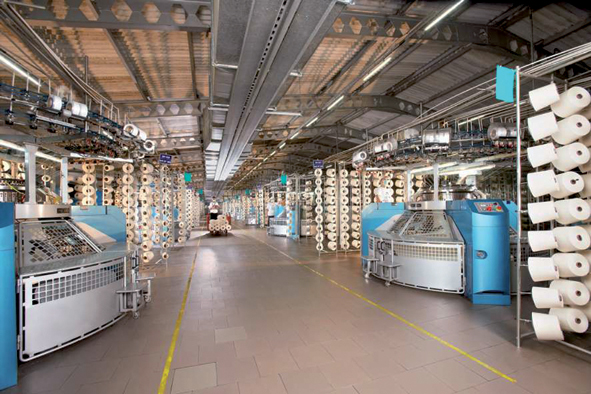 Every individual in the division is tuned to operate with a marketing focus rather than production, as with a marketing focus one operates from a position of servicing a client while with production focus one operates mainly from a position of cost. This continues to remain the company mantra for success.
Every individual in the division is tuned to operate with a marketing focus rather than production, as with a marketing focus one operates from a position of servicing a client while with production focus one operates mainly from a position of cost. This continues to remain the company mantra for success.
Polyester & retail
The Polyester Division recorded sales of Rs. 2,979.22 crores in 2011-12, a growth of 76.48 per cent over 2010-11. Revenues from polyester constituted about 33.47 per cent of the overall revenues of the company.
The CP plants are set up with state-of-the-art technology from Chemtex- USA, POY machinery from Barmag- Germany, FDY machinery from TMT- Japan, and Barmag- Germany, and polyester staple fibre from CTMTC.
With this unique set-up, the company offers a wide range of products that include POY, DTY, FDY, polyester chips, cationic yarn and PSF for diverse applications. The distinguishing feature of Alok’s Polyester Division is its focus on finished products that constitute almost 70 per cent of its polyester capacity.
Polyester business is highly volatile in nature on account of large fluctuations in raw material prices which are linked with movement in cotton prices as well as crude oil and global demand and supply.
Mr. Reshabh Raizada, Chief Executive Officer – Polyester & Retail, says: “Our objective is to mitigate this risk effectively and position ourselves as a dominant player in the segments that we operate. Our philosophy is to produce products with a wide range of applications at the lowest possible cost in order to be competitive with the product quality exceeding global standards for customer delight. The entire strategy is to place our volumes in niche markets globally for a wide array of specialized applications. With the launch of PSF in the second half of this year, we should be able to offer a larger product basket and higher profitability”.
The key initiative of the company for the current year would be to place at least 75 per cent of the company production (which would be a wide range of products like dope dyed yarn, cationic yarn, full dull yarn and micro filament) in the overseas market where margins are better. Its large investment in automation should result in better product quality with minimal damage and a superior product for the customer.
“We are confident about the prospects of the Indian textile industry, and will contribute our part in making it a reality. The innovation in polyester in improving its feel and breathability to provide similar comfort like cotton should be the order of the day for the growing Indian domestic market. We look forward to the future with quite optimism”, he adds.